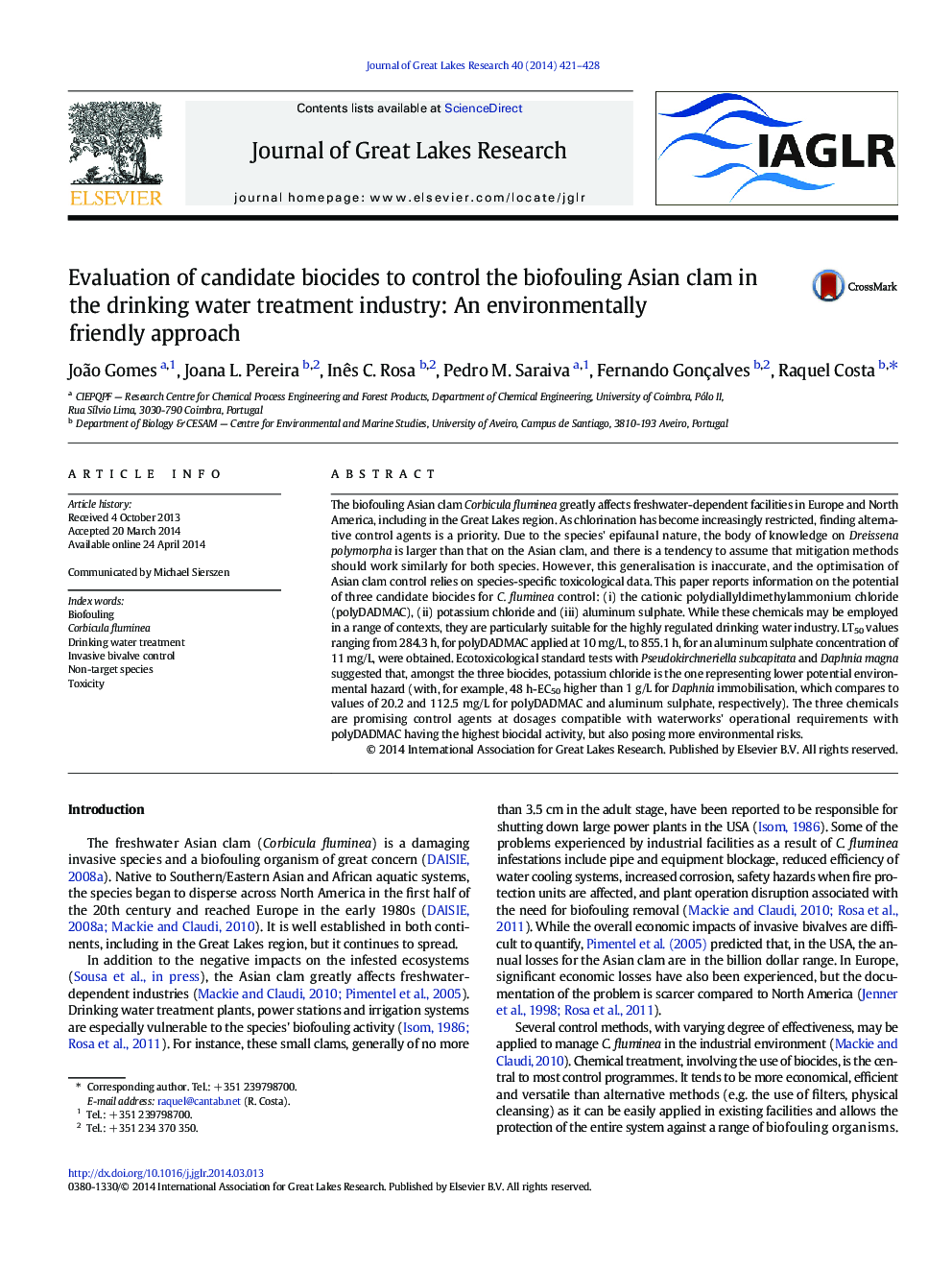| Article ID | Journal | Published Year | Pages | File Type |
|---|---|---|---|---|
| 6305239 | Journal of Great Lakes Research | 2014 | 8 Pages |
Abstract
The biofouling Asian clam Corbicula fluminea greatly affects freshwater-dependent facilities in Europe and North America, including in the Great Lakes region. As chlorination has become increasingly restricted, finding alternative control agents is a priority. Due to the species' epifaunal nature, the body of knowledge on Dreissena polymorpha is larger than that on the Asian clam, and there is a tendency to assume that mitigation methods should work similarly for both species. However, this generalisation is inaccurate, and the optimisation of Asian clam control relies on species-specific toxicological data. This paper reports information on the potential of three candidate biocides for C. fluminea control: (i) the cationic polydiallyldimethylammonium chloride (polyDADMAC), (ii) potassium chloride and (iii) aluminum sulphate. While these chemicals may be employed in a range of contexts, they are particularly suitable for the highly regulated drinking water industry. LT50 values ranging from 284.3Â h, for polyDADMAC applied at 10Â mg/L, to 855.1Â h, for an aluminum sulphate concentration of 11Â mg/L, were obtained. Ecotoxicological standard tests with Pseudokirchneriella subcapitata and Daphnia magna suggested that, amongst the three biocides, potassium chloride is the one representing lower potential environmental hazard (with, for example, 48Â h-EC50 higher than 1Â g/L for Daphnia immobilisation, which compares to values of 20.2 and 112.5Â mg/L for polyDADMAC and aluminum sulphate, respectively). The three chemicals are promising control agents at dosages compatible with waterworks' operational requirements with polyDADMAC having the highest biocidal activity, but also posing more environmental risks.
Related Topics
Physical Sciences and Engineering
Earth and Planetary Sciences
Earth and Planetary Sciences (General)
Authors
João Gomes, Joana L. Pereira, Inês C. Rosa, Pedro M. Saraiva, Fernando Gonçalves, Raquel Costa,
